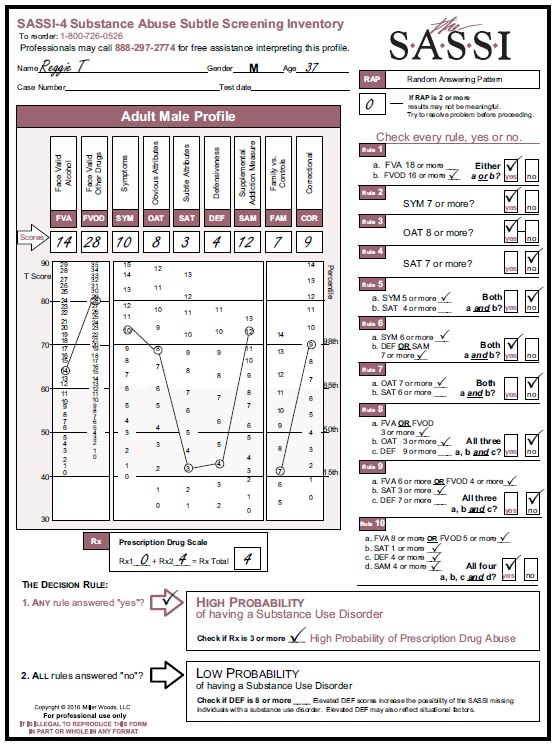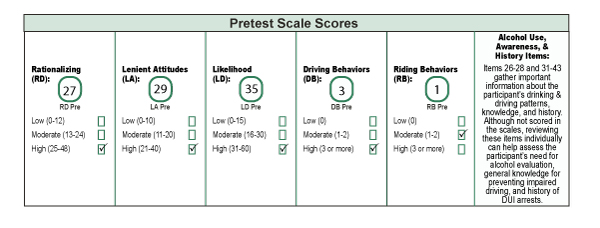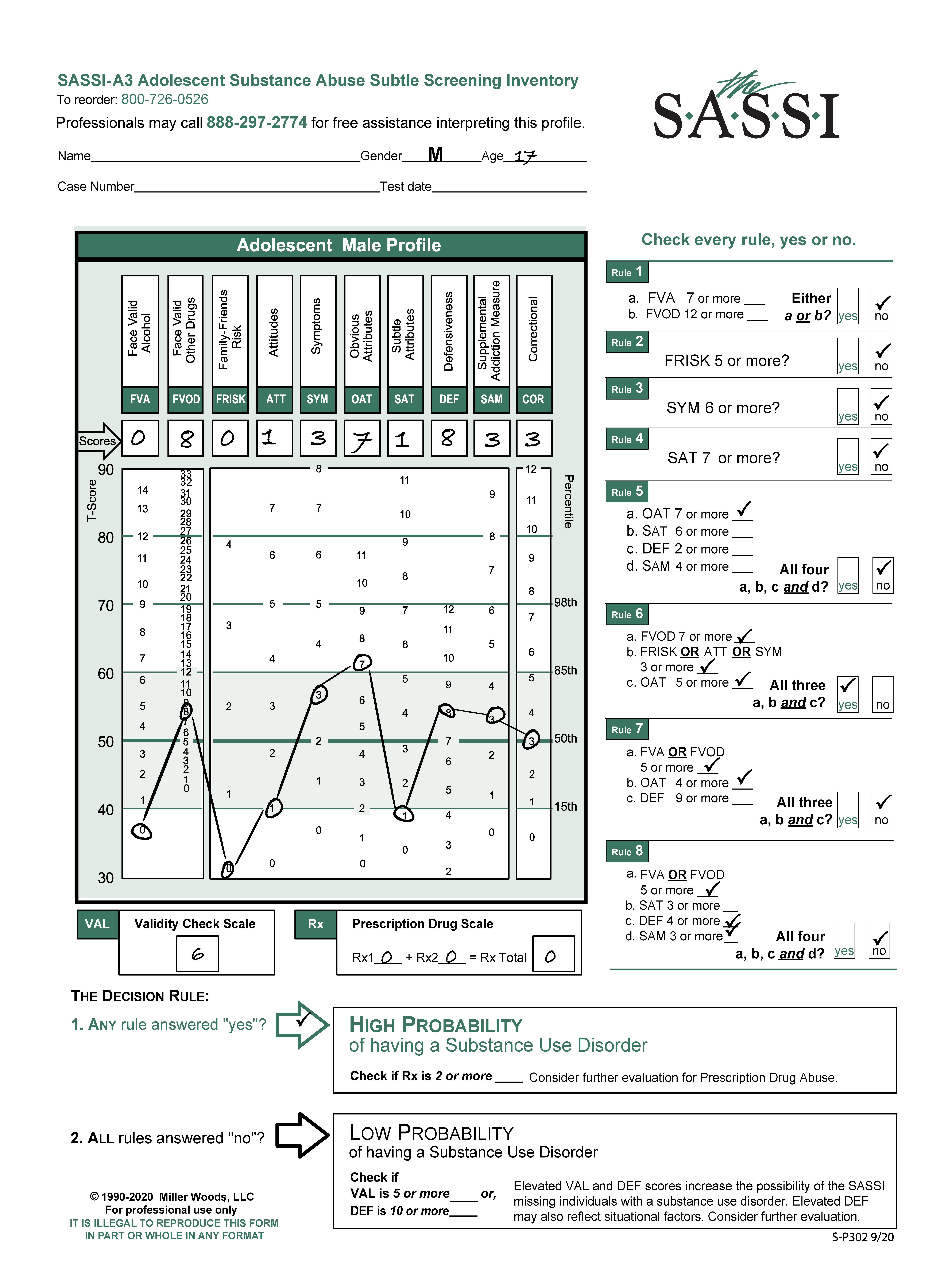‘Reggie’ is a 37-year-old married man. He and his wife have two children. He works as a warehouse worker where he was recently injured in a shipping dock accident. He recently returned to work after being on worker’s comp for several months during which time he was prescribed opioids for his pain. He was sent to his employer’s EAP provider for evaluation after returning to work and struggling with coping with the continued pain and poor job performance.
Reggie T’s responses illustrate another profile often seen in people who acknowledge that they use drugs excessively and that it negatively impacts on their functioning and relationships.
Given Reggie’s high level of drug use and consequences, you might consider a more comprehensive evaluation to determine whether he may need supervised detoxification or other intensive intervention.
You may find Reggie ready to acknowledge that he uses drugs frequently and that he may also drink too much. However, he may not see that his behavior varies dramatically from others who don’t have a substance use disorder. Feedback on where his scores fall on the profile sheet may help him see that his behaviors are not typical. It may be useful to know that Reggie’s wife is currently in treatment for drug and alcohol abuse due to a DUI. Their mutual abuse of substances may help promote their beliefs that their substance use is normal. Examining the items that Reggie endorsed on the FVA, FVOD, SYM and Rx scales may provide useful insight into his motivations for using and help him see the consequences that result from his use.
In this first video watch Reggie’s initial EAP visit in which he was asked to take the SASSI.
This second video is the follow-up session where he discusses his SASSI results with the EAP provider.




